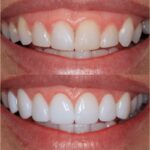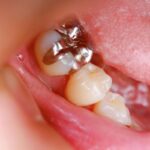
Bottle Rot: Understanding & Preventing Tooth Decay in Babies
-
- 179
In this article, we aim to provide you with a clear and straightforward understanding of bottle rot, a condition where tooth decay occurs in babies and toddlers. We’ll explore the prevalence of this issue, offer you valuable tips on how to prevent it, and uncover the root causes that contribute to the development of bottle rot.
What is Bottle Rot?
Bottle rot, also known as baby bottle tooth decay, happens when bacteria builds up around your child’s baby teeth. This can occur if your child drinks acidic drinks like juice or milk for a long time. It’s not just a problem for their baby teeth; it can have lasting effects on their adult teeth too.
Remember, it’s not just the upper teeth that can be affected. Other teeth are at risk too.
What Causes Bottle Rot?
Baby bottle syndrome can be a serious problem if not treated. Let’s take a look at some common causes of this dental condition:
Prolonged Bottle Use
Regularly exposing your child’s teeth to sweet substances through extended bottle use can create a favorable environment for cavity-causing bacteria to thrive.
Sugary Drinks
Sugary beverages are like a playground for bacteria in your child’s mouth. When bacteria feed on sugar, they produce acids that can harm your child’s teeth. To protect their teeth, it’s important to avoid giving them sweetened drinks like fruit juice, milk, or syrups. Additionally, weakened tooth enamel can increase the risk of tooth decay.
Cleaning Baby Items with Mouth
The bacteria responsible for tooth decay can be transferred from a caregiver to the baby. This can happen through saliva, especially if you clean your baby’s feeding spoon or pacifier using your mouth.
How Common is Bottle Rot?

Babies have a higher chance of developing tooth decay because their teeth don’t get enough protection from fluoride. In a 2018 report by the Centers for Disease Control, it was found that around 23 percent of children between the ages of two and five in the United States have experienced dental caries, also known as cavities, in their baby teeth.
This shows that baby bottle tooth decay is quite common among young children. However, with the right preventative measures like getting a dental insurance plan, we can reduce the risk and help keep those little smiles healthy.
Recognizing Signs of Bottle Rot
Identifying the early signs of baby bottle tooth decay is crucial for timely intervention. Here are some indicators to watch out for:
- White Spots: Keep an eye out for white spots on the teeth or along the gum line. These can be early signs of decay. If you notice frequent appearance of these spots, fluoride treatment, along with reducing sugar intake and practicing good oral hygiene, can help address the issue.
But remember, if tooth decay is left untreated, it can worsen. When it becomes more severe, additional symptoms may emerge, including: - Bleeding or Swollen Gums: Gums that bleed easily or appear swollen can indicate advanced tooth decay.
- Bad Breath: Persistent bad breath in your child can be a sign of deteriorating dental health.
- Fever or Irritability: In some cases, tooth decay may lead to fever or increased irritability in infants, signaling the need for urgent dental attention.
- Brown or Black Spots: The presence of brown or black spots on the teeth can be a strong indication of advanced tooth decay.
How to Prevent Bottle Rot?
Take care of your baby’s teeth
Use a clean gauze pad or rag to gently clean your baby’s teeth. If your water doesn’t have fluoride, ask your doctor if your baby needs fluoride supplements. When the first tooth appears, start brushing without toothpaste. If you do use toothpaste, choose one that is fluoride-free. Once two teeth meet, start flossing regularly. It’s also a good idea to schedule dental checkups as soon as your baby gets their first tooth.
Take care of your own oral health during pregnancy
Remember to take care of your own teeth and gums during pregnancy. Untreated tooth decay in moms can increase the risk of tooth decay in babies. Brush and floss regularly, use fluoride, and visit your dentist regularly.
Clean your baby’s gums
Even before the first tooth appears, it’s important to clean your baby’s gums. Use a soft washcloth to gently clean their mouth daily. This helps remove bacteria and carbohydrates and also helps your baby get used to having their mouth cleaned.
Final Words
Bottle rot is a common dental condition that can occur in babies and toddlers. By taking care of your baby’s teeth, your own oral health during pregnancy, and cleaning your baby’s gums even before their first tooth appears, you can help prevent bottle rot and ensure healthy smiles for your little ones.
If you’re also worried about your child’s teeth and the corresponding expenses, Dental Insurance OA provides affordable and reliable minor dental insurance plans. Choose from a range of options and find the plan that suits you best. These dental insurance plans cover most procedures and give you access to a wide network of experienced dental experts. Don’t wait any longer – save money on your dental expenses with Dental Insurance OA.








